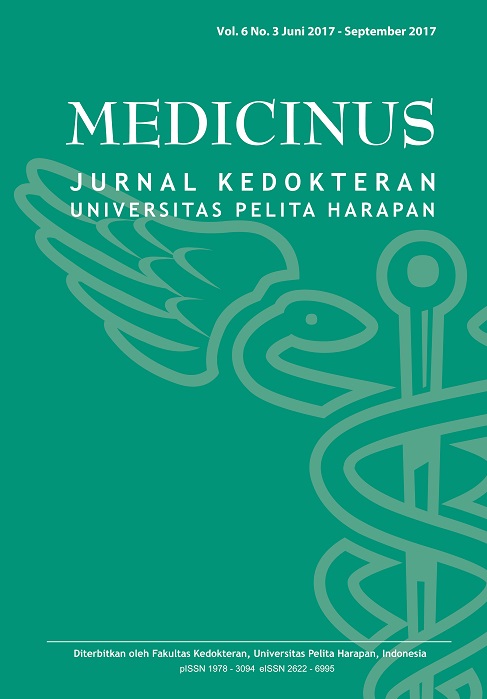The Importance of Immunohistochemical Analysis in Silent Pituitary Adenoma
DOI:
https://doi.org/10.19166/med.v6i3.1150Abstract
Pituitary adenoma contributes to 15% of all intracranial neoplasm. It is usually following benign course and some of them are silent (asymptomatic clinically, but hormone-secreting). Silent adenoma usually found incidentally or when the patients show mass effect (neurological deficits). Many of histologically aggressive silent adenoma subtypes are associated with invasiveness, recurrence and progression to clinically functioning adenomas. Aggressive silent adenoma radiologically tends to invade in downward direction, invading bone, sinus cavernosus, parasellar region. The nature of aggressive silent adenoma subtypes is differing in nature compared to benign nature of pituitary adenoma and should be confirmed immunohistochemically to determine the prognosis and anticipate the risk of recurrence or progression. The case illustration show a real case of 46 years old female progressive headache and visual disturbance diagnosed with non-functional pituitary macroadenoma but positive for more than one immunochemistry biomarker (plurihormonal aggressive silent adenoma).Downloads
Published
How to Cite
Issue
Section
License
Copyright (c) 2018 Ivan William Harsono, Nathania Victoria Stevina, Vivien Puspitasari, Julius July

This work is licensed under a Creative Commons Attribution-ShareAlike 4.0 International License.
Authors who publish with this journal agree to the following terms:
1) Authors retain copyright and grant the journal right of first publication with the work simultaneously licensed under a Creative Commons Attribution License (CC-BY-SA 4.0) that allows others to share the work with an acknowledgement of the work's authorship and initial publication in this journal.
2) Authors are able to enter into separate, additional contractual arrangements for the non-exclusive distribution of the journal's published version of the work (e.g., post it to an institutional repository or publish it in a book), with an acknowledgement of its initial publication in this journal.
3) Authors are permitted and encouraged to post their work online (e.g., in institutional repositories or on their website). The final published PDF should be used and bibliographic details that credit the publication in this journal should be included.





